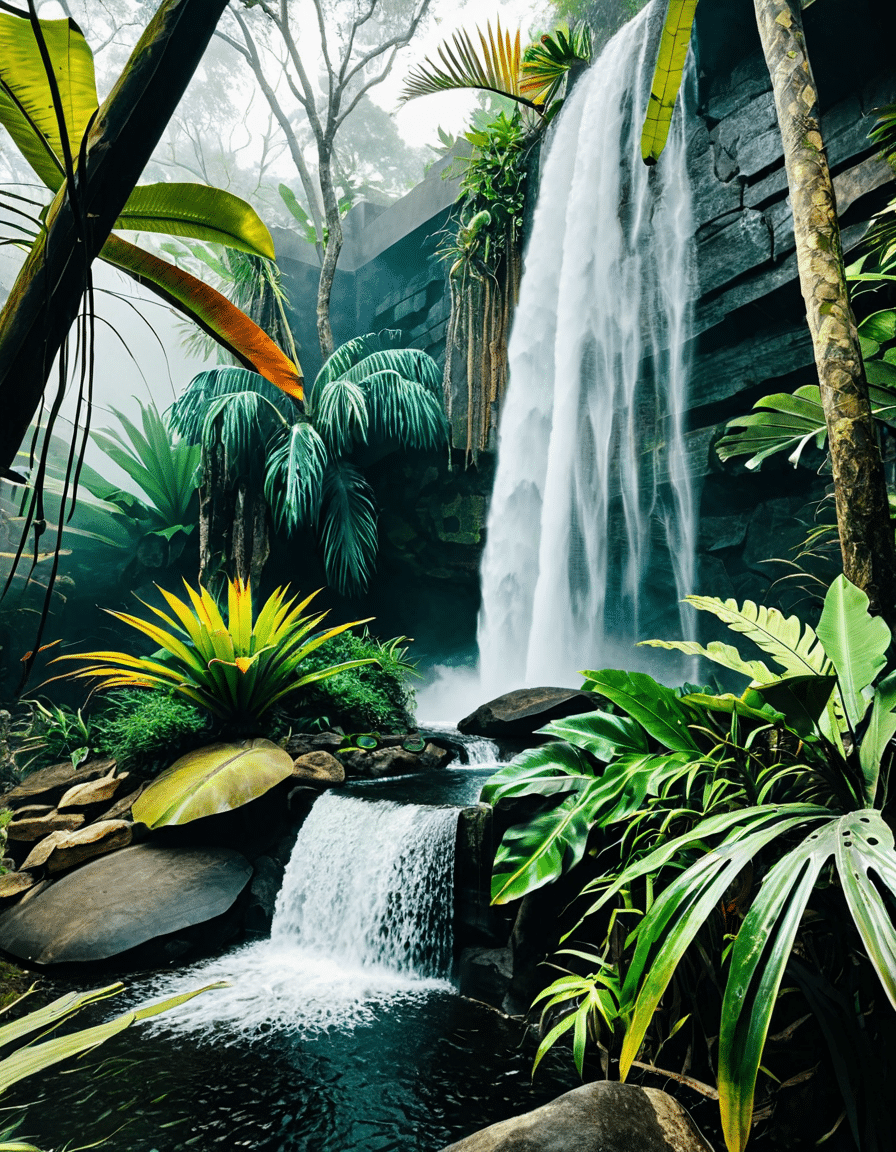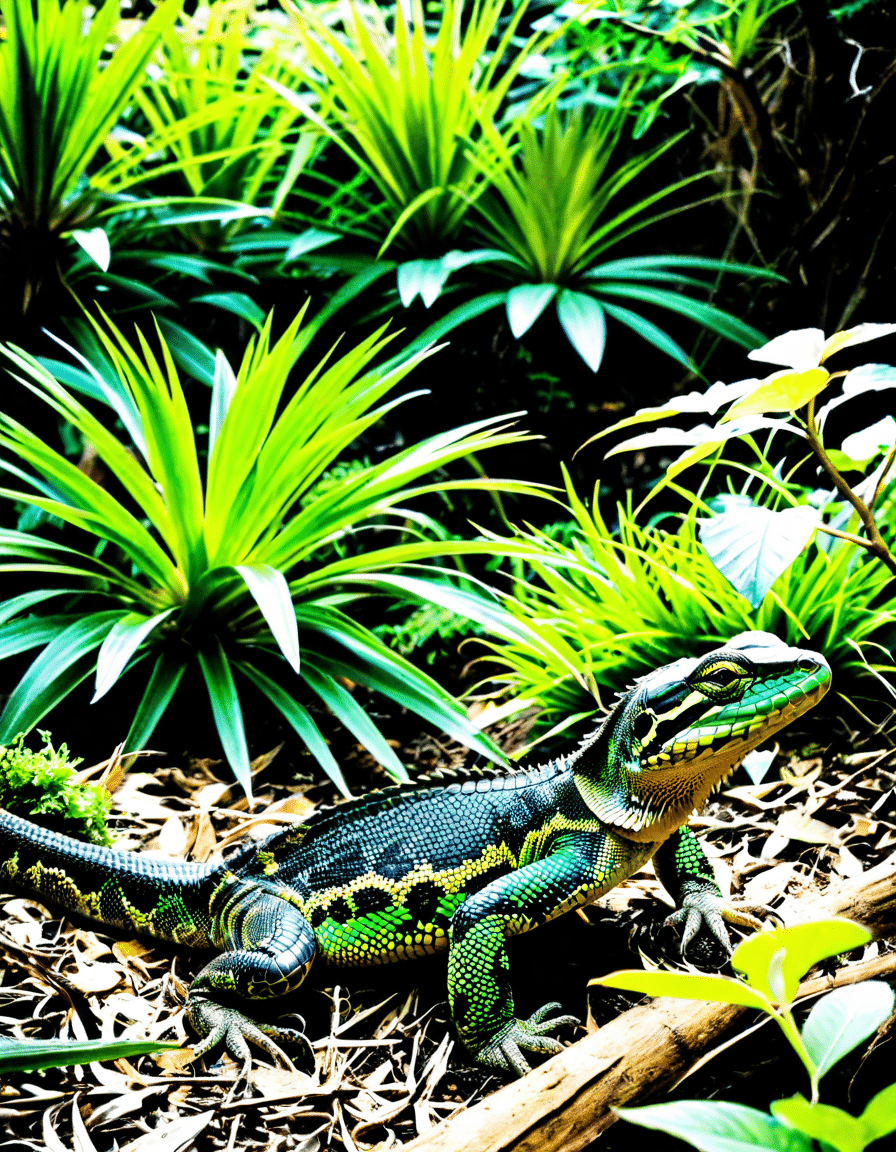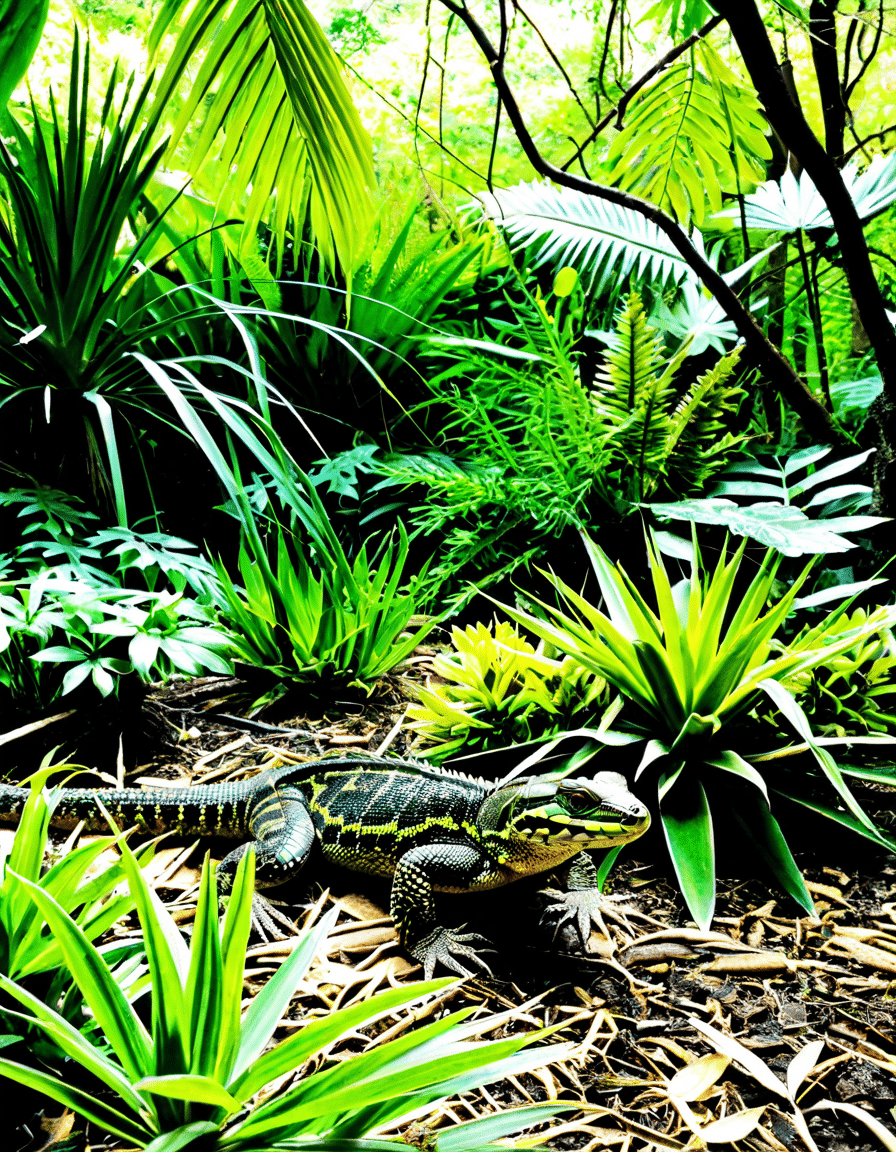Reptile habitat creation is crucial for any reptile owner who wants to ensure their pets thrive. Unlike more traditional pets, reptiles have specific requirements regarding their environments. A well-structured reptile habitat directly affects their behavior, well-being, and long-term health. Whether you’re a newbie or an experienced herpetologist, understanding these essentials can make all the difference in creating a nurturing setting for your scaly companions.
1. Understanding the Importance of a Custom Reptile Habitat
Creating the right habitat for your reptiles lays the groundwork for a happy and healthy life. Thermoregulation needs are one of the most critical elements to consider. Since reptiles are ectothermic, they rely on external temperatures to regulate their body functions. A good setup features a temperature gradient that includes a basking area and cooler zones, allowing the reptiles to find their comfort zone, much like they would in their natural habitats.
Next up, humidity levels can’t be overlooked. Different species have different moisture needs. For instance, a Green Tree Python (Morelia viridis) thrives in a humid environment, needing around 50-70% humidity, while a Bearded Dragon (Pogona vitticeps) prefers a dryer atmosphere to flourish. Using a hygrometer helps you monitor and tweak these levels, ensuring your reptile’s habitat delivers exactly what your pet requires.
Finally, we can’t talk about reptile habitats without mentioning lighting requirements. UVB lighting is essential for many species to synthesize vitamin D3. For example, while Leopard Geckos (Eublepharis macularius) don’t need intensive UVB, a consistent light cycle that mimics day and night is key to keeping them in a rhythm, just like nature intended.

2. Top 7 Essential Components for a High-Quality Reptile Habitat
When it’s time to set up the perfect home for your reptilian buddy, you’ll want to keep these seven components in mind.
3. Common Mistakes in Setting Up Reptile Habitats
With good intentions, reptile owners often stumble into common pitfalls. Knowing what to avoid can improve your pet’s quality of life.

4. Advanced Tips for Creating Optimal Reptile Habitats
For those who take their herpetology seriously, here are some advanced tips to level up your reptile habitat game:
Transforming Your Reptile Habitat into a Sanctuary
Creating a suitable habitat for your reptilian friends is an adventure that goes beyond just aesthetics. It takes effort, research, and a solid understanding of their unique needs. Every element you incorporate plays a vital role in their physical and emotional health, creating a sanctuary where your reptiles can flourish.
In the long run, this attention to detail makes all the difference, allowing you to enjoy the fascinating behaviors and unique presence of your reptiles for many years. Being a responsible reptile owner means committing to crafting the perfect habitat tailored specifically to the needs of your pet while enjoying the journey of discovery as you learn more about these incredible creatures.
If you’re interested in finding more about pet care topics, such as black And brown dog Breeds or even canine cataract surgery, don’t hesitate to explore and expand your knowledge!
Reptiles are complex animals with intricate needs, but with the right habitat, you’ll embark on a rewarding journey alongside them.
Reptile Habitat: Fun Facts and Trivia to Enhance Your Understanding
The Basics of Reptile Habitats
Creating the perfect reptile habitat is no small feat! Did you know that reptiles can often feel the temperature change as sensitively as a cat spots a beam of sunlight? This sensitivity means that a well-maintained temperature gradient in their habitat is crucial for their health and behavior. They require a warm area to bask and a cooler area to retreat to. Fun fact: In Wappingers Falls, temperature fluctuations can be extreme, so paying attention to these details is essential for local reptile enthusiasts.
Another fascinating aspect is their dietary preferences. Some reptiles are strict herbivores, while others are carnivorous. Understanding these needs can make or break a reptile’s well-being. And here’s something interesting—Chokeberry plants are sometimes recommended for natural habitats since they provide both cover and food for certain species. Just imagine a little lizard lounging under the leafy shelter, blissfully munching away!
Enrichment for Your Scaly Friends
It’s vital to offer enrichment in any reptile habitat to mimic their natural environment. Think about climbing structures, hiding spots, and even interactive feeding methods. Fun trivia: Did you know that some lizards can change color? This amazing adaptation not only helps them blend in but also can be influenced by their surroundings and mood. Keeping your habitat visually stimulating can encourage these fascinating behaviors.
Now, let’s talk about the nitty-gritty of keeping a clean habitat. Many new owners wonder about the peculiarities of reptile care, just like how dog owners might fret over black spots on a dog belly. It’s important to recognize that consistency in cleaning a reptile habitat is key to maintaining a healthy environment for your pet. Interestingly, just like how poodle owners might ask, do Poodles moult? reptile owners often grapple with questions about shedding and maintaining humidity levels during that time.
Climate Control and Special Needs
Climate is another crucial element in a successful reptile habitat. Providing the right humidity can influence your pet’s health just as much as temperature! Modern terrariums often come with built-in humidity gauges and heaters. For instance, keeping an eye on those 7/1 arm rates isn’t just for mortgages—proper financial planning can also help you afford necessary reptile-care equipment.
Finally, remember that each reptile species has its quirks and preferences. For example, some might prefer burrowing opportunities, while others thrive in a more open setup. The bottom line? It’s all about creating a welcoming space. Whether you’re studying their behaviors or just enjoying their company, a well-thought-out reptile habitat can reveal a world of wonders. So, dive in and explore all the amazing ways to enhance your scaly companion’s home!






